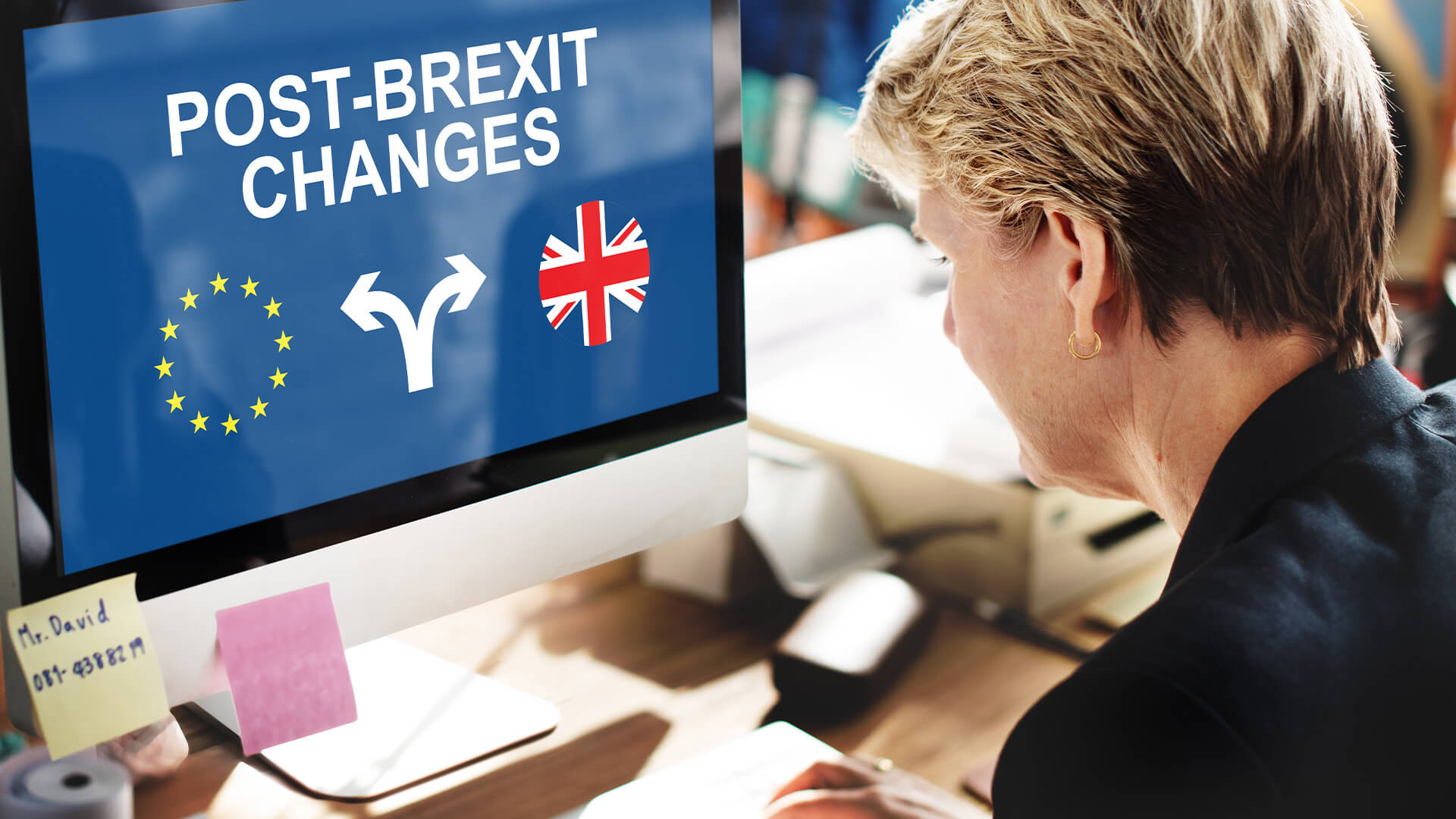31st January 2020 ‒ when the UK officially left the EU, though the transition period did not end until 31 December of that year ‒ seems like a lifetime ago. Since then, Britain has negotiated the COVID-19 pandemic, numerous lockdowns, company closures, tax increases – need we go on?
For businesses, this period of just over two years has, undoubtedly, been one of the toughest in modern history, largely due to uncertainty caused by all these events. That said, when we cast our minds back to that January, and the four years which preceded it, from the summer day in 2016 when the UK announced that it would exit the EU, uncertainty was very much the overriding theme of those years too.
For many of us, the EU was all we had known. The UK joined the European Union almost 50 years ago, becoming an official member state on 1st January 1973.
With this in mind, it should come as no surprise that a large percentage of the population would see departure from the EU as daunting, if not terrifying. For individual citizens, yes, for businesses, of course, but there was another corner of the nation which didn’t receive that much attention, in terms of how much Brexit would impact them ‒ the public sector.
Obviously, now that our departure from the EU is more than two years old, we’re in a better position to analyse the effects felt by public sector organisations and, similarly, public procurement. In this article, we take a look at the public sector bodies that have been hit hardest by Brexit.
A background
A study carried out in March 2018 by Dr. Gordon Marnoch, Reader in Public Policy at the University of Ulster, detailed how Brexit would impact public services in a number of different ways. Of course, there would be the resourcing effects associated with the economic consequences of Brexit. There would be a breakdown of longstanding institutional and legal links between the UK and the EU. And, similarly, there would be the issues associated with the employment of EU 27 citizens.
While it’s safe to say that almost every public sector body in the United Kingdom has been impacted by Brexit in some way, some have certainly witnessed more upheaval than others.
Healthcare
Did you know that in March 2018 5.5 per cent of all NHS staff were from the EU? In adult social care, meanwhile, 16 per cent of the workforce is non-British with 7 per cent coming from EEA countries.
Since Brexit was announced in June 2016, the number of workers arriving from EEA countries has been gradually declining, mainly due to concerns over job security and future prospects. This is a worrying figure when considered alongside the fact that in March 2018, 6 per cent of jobs within the NHS actually remained vacant.
That said, however, in order to limit the impacts felt by the healthcare sector in the aftermath of Brexit, the UK government introduced a points-based system that operates for “the majority of health care workers”. The system is a fast-track visa which exempts health care workers from the EEA immigration rules.
The government introduced these additional regulations for two main reasons:
- The NHS wouldn’t be able to function without the international workforce
- The government recognises that international recruitment is key to increasing NHS staff headcount – it has committed to recruiting an additional 12,000 nurses from overseas by 2024/25.
The issues, however, aren’t solved entirely by the relaxation of visa requirements – mainly thanks to the fact the rules do not cover social care, leaving a particularly large void in terms of staffing in this area. According to the Social Policy Blog, “the social care workforce gap produced by Brexit has been estimated to range from 350,000 people in the most favourable scenario, to 1.1 million people in the worst-case scenario by 2037.”
Furthermore, the new points-based immigration system introduced back in January 2021 means that new migrants have to prove skills in the English language alongside having a job offer lined up in a skilled profession with a minimum salary of £25,600. Despite the salary threshold dropping to £20,480 for ‘jobs in the shortage occupation list’, care workers are not considered a shortage occupation and with an average annual salary of £19,000, fall considerably short of the £25,600 that would ensure that overseas workers would qualify to work in the UK.
Jonathon Holmes, Policy Adviser at the Kings Fund, wrote: “The advice given by the Migration Advisory Committee and accepted by Government, is that workforce shortages in social care are driven by market forces, such as rates of pay, and would not be resolved by increased international recruitment.”
Within the healthcare sector, it has been quite difficult to determine the true impact of Brexit and whether or not it has been severe as initially expected, mainly thanks to the fact “the restrictions of movement necessitated by the COVID-19 pandemic have halted and undermined efforts to increase international recruitment to the NHS.”
Defra
Trade tariffs and regulatory reforms were two aspects of Brexit which were considered to be particularly problematic due to the fact that most government departments had relied heavily on processes that for years have been defined and managed by the EU. HMRC, the Home Office, and Defra were all detailed as organisations which would feel the impacts.
The impact is also being felt heavily by the civil servants who’ve worked implementing EU procedures as part of their role for the vast majority of their professional government careers and quite literally know no different.
2.5 million commercial vehicles pass through the port at Dover each year. Every single one of these vehicles must log its complete inventory with Defra, a procedure that was previously managed on a EU established platform.
French officials warned that a delay of just two minutes at the French border could lead to tailbacks at ports on either side of the Channel, causing major disruption.
Defra, despite being one of the smallest government departments, has been tasked with one of the most almightily large Brexit checklists. The numbers certainly make for interesting reading:
- 12,000 EU laws relate to Defra
- The EU affected 80% of tasks carried out by Defra
- 60% of food and drink produced in the UK is exported to Europe
- 90% of British beef and lamb is exported alongside 70% of pork
While it may have been hard to determine whether or not the healthcare sector has been hard-hit by Brexit, the impact of Brexit on areas of life associated with Defra is certainly a lot more obvious – and has raised numerous eyebrows in recent times. Reported 20-mile lorry queues into Dover obviously got people talking about the frictionless nature of Britain’s exit from the EU.
While the Port of Dover suggested that the queues were “intermittent” and regularly occur due to the nature of the roads leading up to the port, there is no denying that problems arise more regularly. Highways England reported that in January 2022 alone, Dover’s Traffic Management System – Operational Travel Access Protocol – was used 18 times compared to three times in January 2019 and seven times in January 2020.
In January 2020, paperwork required for taking goods to the EU could be completed within a 60-day period of export, whereas now this must be completed by the time the lorry boards the ferry. Checks, on average, according to the Port of Dover take around five to six minutes per vehicle though hauliers have reported that some take up to fifteen minutes – worrying numbers when you consider the aforementioned comment by French officials. While the delays can be put down to new operating systems and inevitable teething problems, the fact that four new major sets of checks and requirements are set to be introduced on the 1st July, 1st September, and 1st November this year begs the question whether the journey beyond Brexit will continue to be a rather bumpy one!
Here, we’ve only taken a look at two areas of the public sector but, as we’ve previously noted, the entirety of the public sector will be feeling the effects of Brexit in one way or another.
Written for EU Business News





























